Saturday January 16, 2016
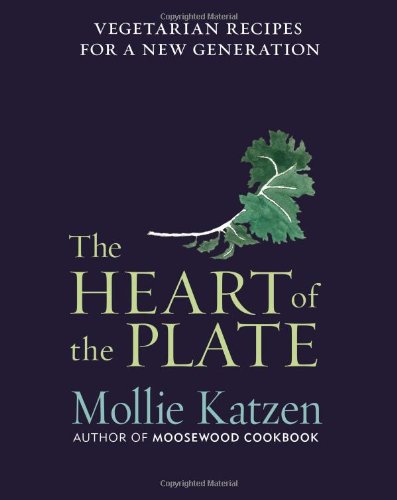
The Heart of the Plate: Vegetarian Recipes for a New Generation
Opening Mollie Katzen’s The Heart of the Plate, I scan over the first page, where an illustration scribbles in faux-handwritten text: “What pulls us into the kitchen?” Below, she gives suggestions like Motivation, Access, Attitude, Variety, and Time Management. All are possibilities when one enters this space -- Katzen understands and strives to communicate it in her book by emphasizing a message of inclusion, where everyone is welcome in the kitchen.
Kazen starts the book with a set of Vegetarian and Vegan Menus to ensure that a meatless meal can be satiating and satisfying. You can begin with Grilled Haloumi Cheese on watermelon slices, followed by a Mushroom Popover Pie, Mashed Broccoli on the side, and a Fruit-Studded Madeline Cake to finish. Another option is the Caramelized Onion Frittata with Artichoke Hearts, Zucchini, and Goat Cheese paired with a Grilled Bread and Kale Salad with Red Onions, Walnuts, and Figs. End the evening on a slightly-sweet note with the Brown Sugar-Roasted Rhubarb with Cinnamon-Toast Crumbs.
I, however, would center my perfect meal around the Crispy-Coated Eggplant Parmesan “Burgers”, whose Parmesan exterior evokes memories of the rich and comforting eggplant Parmesan of my youth. Dredged in lightly-beaten eggs and seasoned with thyme, oregano, or sage, these are a step-up on the classic in both flavor and form. Taking on the shape of a burger, the eggplant is given all the excitement appropriate for a simple, but celebratory, backyard barbeque.
The vegan menus are no more challenging to create than their dairy-accepting alternatives. Though the names are slightly more ethnic (Onion Pakoras dipped in Pomegranate-Lime Glaze, Mushroom Wonton Soup, and Muhammara -- a Turkish sauce akin to the Spanish Romesco), they still retain Katzen’s adherence to simplicity and accessibility. The Pan-Grilled Mushroom Slices require just a half-page explanation, cooking them simply in a pan of hot oil until golden, finishing with a sprinkling of salt. She also suggests using them as a bacon substitute, which can be done just by adding a little paprika to the mix. Use as a topping for any savory dish -- I’m thinking the Cajun-Style Tofu Burgers -- and you have a complete, delicious, and vegan meal.
With photos centering in upon the array of colors present in each recipe and illustrations to complement the vegetables’ natural vibrancy, The Heart of the Plate is a book laden with culinary and artistic inspiration. I could spend an afternoon with this on my couch, reading the recipes beginning to end, as easily as I could take this into the kitchen to conjure up a weeknight meal. Katzen ends her introduction beautifully, reminding us that as we use this book, we adapt the recipes, allowing them to become our own: “I hope and trust the food you prepare will reward you and the people around you with all the inspiration, delight, and nourishment you deserve.”
Saturday January 09, 2016
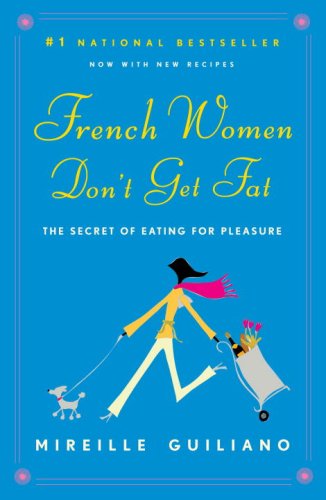
French Women Don't Get Fat
We have an image of French women being perpetually stylish, perfectly-coiffed and svelte, wearing a petite boatneck tee paired with a cropped skinny-leg pant. What is the secret to maintaining such proportions, when American women can’t seem to succeed at any one of the many diets they take on? In French Women Don’t Get Fat, Mireille Guiliano breaks through the French paradox, explaining that it is not a trendy refusal to eat carbs or a strict plan consisting of protein alone that amounts to a sustainable lifestyle. It is the continued practice of eating for pleasure, albeit in moderation, which allows French women to revel in life’s indulgences and enjoy a healthy physique.
Mireille’s own struggles with weight gain as a French teenager studying abroad in the United States revealed the central issues of hefty portion size and automatized eating as the blame for American women’s unhealthy relationship with food. To start the weight-loss process and initiate the track towards healthy behaviors, Mireille suggests her recipe for Magical Leek Soup, a broth made simply of boiling leeks in water which one drinks several times throughout the day for 48 hours. She relies on this soup for immediate results after particularly indulgent periods throughout the year.
Another trick is homemade yogurt, which Mireille loves including with breakfast or as a light snack or dessert. She praises the millions of bacteria in yogurt which promote healthy digestion and suggests pairing with a bit of honey, cinnamon, or fresh berries to make it more palatable than eating on its own. Mireille, however, prefers it plain, loving the tart, creamy combination that brings pleasure to every bite. She gives two recipes, one with a yogurt maker and one without. The latter involves just two ingredients, simply adding the heated milk to a starter, leaving the mixture to set in a warm place overnight, and refrigerating for another 8 hours before serving.
When you have overcome these slightly more challenging weeks, Mireille gives recipes that are truly indulgent in their flavor, though still adhering to the rule of manageable portion sizes. The Chocolate-Espresso Faux Soufflé retains its namesake’s style and flair, but is simpler in preparation so that you can serve it for entertaining without fear that the soufflé will fall. Relying on the intense flavors of dark chocolate and espresso alone, there is no need for added sugar, making this a surprisingly light and delectable treat.
Combining her not-so-strict eating plan with frequent but basic exercise (I’m not talking sweating it out on the treadmill!) gives her readers peace and freedom in their approach to leading a practical lifestyle. She uncovers the mystery behind the French woman’s build, making it clear that it is not luck but the occasional indulgences which bring them happiness and health.
Saturday January 02, 2016
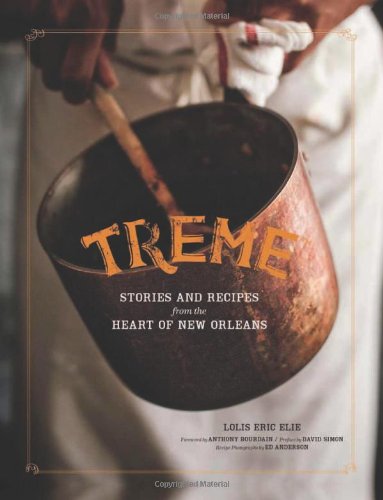
Treme: Stories and Recipes from the Heart of New Orleans
New Orleans is a strong and spirited mix of history, music, and food. It is a city about energy and flamboyance, always trying to give those who visit the best experience possible. In the introduction, Janette Desautel credits the infectious passion of the city’s chefs, bakers, and home cooks as the reason for her picking up the trade as well. Treme’s dedication is consistent with these feelings, explaining that the delicious food comes from the stories behind it and the people who want to keep this image of New Orleans as a culinary capital alive:
“To the cooks of New Orleans [...] who understood and taught us that red beans and rice is a taste of home, a sacramental dish, a statement of what is good and necessary about New Orleans, and a full-throated declaration about why rebuilding this city and its culture was and remains a matter of great urgency.”
Dreams of buttery brioche dance in my head when a bread basket gets passed around at dinner. Chef Susan Spicer’s Sweet Potato Brioche fulfills this request. Rich from six large eggs and a tender, chewy crumb from a purée of roasted sweet potato, rolls of this emerge from the oven in their bright and glistening glory. The artisan technique behind this recipe evokes the immense care New Orleans bakers give to their breads and sweets. They are patient with the dough, allowing it to rise in soft pillowy peaks for hours, knowing the final result will be worth the wait.
Though some recipes, like Momofuku’s Poached Eggs with Caviar or Le Bernardin’s Pounded Tuna with Foie Gras, give an idea of the culinary grandeur this city has reached, others revert back to the homestyle favorites, like Chef Frank Brightsen’s Banana Bread Pudding. Bread pudding is something you’ll find in every New Orleans restaurant, gussied up or dressed down, in all its eggy splendour. Brightsen prefaces the recipe by saying that “Bread pudding is the most traditional of New Orleans desserts. As French bread is served at most New Orleans meals, there is almost always leftover bread that turns stale. This is the perfect way to utilize that …”
A two-page spread is dedicated to “The Food of the Streets”, where Janette Desautel explains the cultural and economic importance of street vending for the city. For African-American women, both free and enslaved, it served as a financial opportunity. She also highlights Arthur “Mr. Okra” Robinson, who sold produce from his truck all throughout New Orleans, calling out the day’s pickings to potential customers. When his pick-up broke down, the city came together to raise money with benefits and donations that bought him a new truck and allowed him to continue to sell his produce -- a perfect example of how New Orleans supports and cares for one another. The street food scene holds Latin influence as well in the many taco trucks that frequent the city. With so many diverse options, finding something to eat, well-made and delicious, is never a challenge in the Crescent City.
Treme is a beautiful mix of recipes and their contributors’ voices, explaining what the foods mean to them and how they represent their image of New Orleans. Toni Bernette admittedly states that he is not a great cook, but that he hates bad food and “wouldn’t knowingly give you a recipe for it”. This sentiment results in a simple formula for Pecan Pancakes -- the perfect Sunday breakfast, spent outside on a warm New Orleans day.
Saturday December 26, 2015
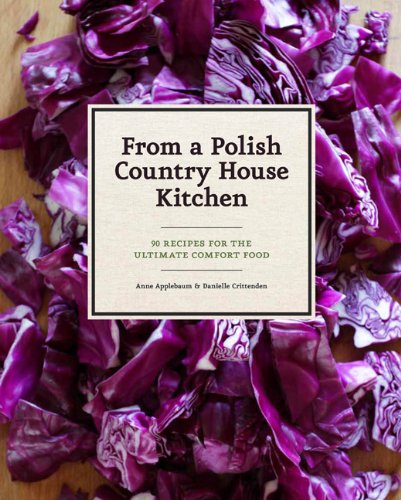
From a Polish Country House Kitchen: 90 Recipes for the Ultimate Comfort Food
This book doesn’t pay strict adherence to traditional Polish cooking. Instead, as Anne Applebaum learned to cook out of necessity, finding herself living in her family’s recently-purchased, dilapidated Polish manor home, she had to cook with what was readily-available. In this way, she took on her own style, using similar ingredients, but straying from Polish techniques to create her own.
From a Polish Country House Kitchen begins with vignettes capturing the home’s narrative -- a grouping of chopped mushrooms, a bowl of just-picked plums, and a wooden gate marking the entrance into the garden. In the preface, Danielle Crittenden addresses the seeming absurdity of writing a Polish cookbook and discusses the looks of surprise when she mentions the project. However, she turns on this, saying that the book moves forward from the familiar food of Polish peasantry, instead honoring the culture that has been reinvented and brought to a higher standing.
The women take one of the greatest representations of Slavic culture, beet soup, and give three versions that satisfy any range of palates. While the traditional version is heavier in its variety of vegetables -- carrots, parsnips, leeks, celery, root, and mushrooms galore -- they also provide an option made more exciting with the addition of balsamic vinegar. The final recipe is pictured in its light-pink glory, slivers of hard-boiled eggs peeking out from among a garnish of chopped chives and the beets’ vibrant hue.
Chicken takes focus in many of the main recipes, like Stuffed Chicken Breasts with Cognac Sauce and Roast Chicken with Clementines. However, a picture boasting chunks of mushrooms in a cream-laden sauce spooned over slices of chicken has me craving the Chicken Breasts with Chanterelle Sauce. Simply browning the chicken on each side, cooking with butter, onions, garlic, the chanterelles, and baking away with a bit of cream allows for a comforting and deliciously simple weeknight meal.
When a sweet tooth nags me with its tantalizing images of vanilla ice cream or apple pie, I don’t know why Polish desserts never enter my mind as well. The Cheesecake with Strawberry-Red Currant Sauce trumps all heavy, overly-sweet American alternatives. The authors explain that the difference is in the cheese, where the Polish version relies upon a “farmer’s cheese” to give the cake a lighter, airier texture. The brightness of the sauce lends a hit of color and flavor to the ricotta filling and breadcrumb crust. They suggest eating it with ice cream, thankfully satisfying my American cravings as well.
This is the story of an American kitchen coming into contact with the established practices of a Polish one, testing how simple food can change with location, and seeing how it can become your own.
Saturday December 19, 2015
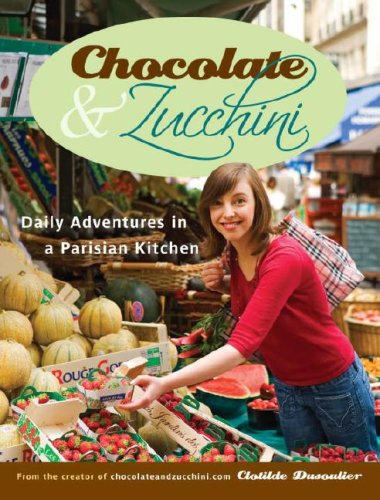
Chocolate and Zucchini: Daily Adventures in a Parisian Kitchen
In Chocolate and Zucchini, Clotilde Dusoulier transfers readers to Parisian markets, allowing them to get hopelessly lost among the gorgeous haricots verts, be offered a bright-red radish, or sample a bit of tangy Roquefort. Her recipes are geared at taking this simple produce and making a wide array of dishes that vary from the refreshingly simple to the more elaborately complex.
Clotilde divides her entertaining section into categories like Apéritif, with lighter options such as the Two-Olive Tapenade or Eggplant Caviar, followed with Impromptu, giving easy recipes for the gatherings you haven’t been planning three weeks in advance, and the more involved Dîner. The latter boasts options like Sea Scallops and Mango with Parmesan Wafers or Comté Cheese Soufflés, but I’m drawn most to the classic Beef Bourguignon, a recipe so well-known that even Americans rely upon it as a dinner party staple. She applauds the dish for its melt-in-your-mouth texture thanks to meat and vegetables left to marinate overnight in a bottle of Burgundy wine. Adding just over an ounce of semisweet chocolate is enough to give a slight sweetness in opposition to the acidic sauce. With carrots, onion, bacon, and beef, this is a hearty dish one can use for any chilly winter night spent with company.
Clotilde attributes her love of baking and her passion for sweet things to her time spent assisting her mother by the oven, measuring, pouring, and of course, tasting. She loves watching the chemistry that ensures a mixture of butter, eggs, flour, and sugar will result in something entirely different the moment it comes out of the oven. While the Creamy Mango Ricotta with Macadamia Crunch and the Blueberry Amandine Tart have me salivating with just a peek at their ingredients lists, it’s the Chocolate and Zucchini Cake that stops me on the first page of her Desserts section. The recipe headnote explains how Chocolate & Zucchini came to be the name of her award-winning blog, a combination of ingredients and flavors that seemed to fully-encompass everything she loved about food. Clotilde found it fitting to seek out a recipe for her book that displayed the same surprisingly delicious mélange of flavors. With a healthy amount of cocoa powder and bittersweet chocolate chips, you’ll only notice the zucchini for the moist bite it brings to this cake’s tender crumb.
Chocolate & Zucchini is a small-volume exploration into the time-honored but pleasure-filled French approach to cooking and eating. Clotilde gives us an idea of what it is to share in this tradition, beginning with the markets, proceeding to the table, and finishing with a satisfying meal.
Saturday December 12, 2015

Harvest to Heat: Cooking with America's Best Chefs, Farmers, and Artisans
Even before the title page, Harvest to Heat sends us immediately into a world of fresh produce and gorgeous culinary offerings. An array of violet-hued eggplants, plums, and flowers is spread across a two-page spread, prefacing the beautiful images and thoughtful recipes which follow. In the book, chefs, farmers, and artisans come together in sharing their philosophies on what it means to buy, cook, and consume locally.
The first recipe, Blue Cheese Tartine, showcases the Bayley Hazen blue cheese from Jasper Hill Farm in Greensboro, Vermont. Though the name sounds fancy, the headnote reassures you that tartine simply means an open-faced sandwich. Toasting thick slices of rustic sourdough bread brushed with a little olive oil and allowing a sprinkling of the cheese to melt on top, makes the perfect base for crispy slabs of bacon and a sweet hit of wildflower honey. It is a composition perfect for breakfast or an easy-to-assemble lunch. Simply made, simply delicious.
The Crème Fraîche Galette with Heirloom Tomatoes continues upon the theme of country-style French cooking. A galette makes a beautiful free-form base for a stunning array of tomatoes in every color. A combination of the tangy crème fraîche and the well-developed but not overpowering bite of Manchego sits beneath the tomatoes, creating a creamy consistency when emerging from the oven in its melted glory.
I skim through the dessert section, finally settling in upon the Chocolate Pots de Crème. This has always been one of my favorite desserts for its creamy texture and rich bite. Diving your spoon into a jar or ramekin containing the perfectly-set mixture is a small pleasure that is invariably satisfying. The recipe provides a balance of flavors between the heat of fresh ginger and the sweetness of chocolate. This intensity makes for the limited use of sugar -- an ideal result.
In the foreward, Alice Waters describes the mission she built her restaurant, Chez Panisse, around. She began with a goal of bringing the culinary aspects of France to California, those which exposed her senses to a new way of eating. However, it grew into a passion for knowing the farmer, their story and the story of their food. She applauds Harvest to Heat for sharing this purpose, for wanting to connect the consumers to producers in a bond sealed by the seduction of simple, well-made food.
This book is a nod to the future of American cooking, one where we care not so much for the immediacy and accessibility of our meals, but for the careful development of their history from plant to plate.
Page 1 of 6 pages 1 2 3 > Last ›











